What lens have you got on that?
I hate talking about gear when I am using it. As a long suffering wedding photographer I used to dread the approach of the serious looking old gentleman, scuffed brown leather cased, 50’s vintage, camera round his neck. Usually he had just been fiddling with for at least ten minutes to take one photograph of his rather overweight, and definitely bored, wife in her best hat. I knew the inevitable question was coming.
‘What sort of lens have you got on that?’
‘That’ was usually a 6×4.5 Bronica film camera. We used to use medium format cameras because no one believed you were a pro with a 35mm SLR
My reply was often a completely genuine, ‘I don’t know.’
I could see him debating as to whether to rush off and exclaim to the bride that she had booked a complete idiot to take her wedding pictures, or whether to tell me not to be such a sarcastic bugger.
The truth is, the actual specifications of a piece of kit often have evaporated from my head as soon as I have bought it. As far as a lens is concerned, as long as it is sharp and zooms from wide enough to get everything in or create a certain perspective to long enough to fill the frame and create another perspective, I do not care who made it.
You will notice I said, ‘As soon as I have bought it’.
So What Camera do I need for shooting creative nudes?
As a professional photographer I do extensive research on most things I buy. Checking the specs, reading reviews, playing with them and testing them to make sure that they are going to do what it says on the tin. And, most importantly, that they are not going to let me down.
Right the next bit is only going to cost you a fortune if you are male and have a small dick as, according to most women if you have, you are going to need an ENORMOUS camera (or buy a sports car) to compensate. There is probably a logical correlation between camera size and dick size, as most women say they probably would not notice, unless it (the dick) was VERY big or very, very, small: it’s the way it is used. The same applies to a camera.

Almost any camera can be used when shooting creative nudes but, to avoid having to accept major limitations, you are going to at least need a good quality compact. This should have a good quality zoom because you are going to need the longer end of the zoom.
The further you are away from something the flatter the perspective appears. When shooting head and shoulders portraits this is a lot more flattering to facial features than the distortion produced by a wide angle lens.
The biggest limitations a lot of camera manufactures seem to place on their products being used by serious photographers is lack of a hotshoe and a viewfinder.
The hotshoe enables you to connect wirelessly or via a sync cable to an off camera flash. . Even if you do not have access to a studio, a decent off camera flash can work wonders for all sorts of location photography, even in daylight. A viewfinder enables you to concentrate on the composition and framing of your image much more accurately than on screen.
The conclusion all of this is leading to is that, if you are going to take your photography seriously, you are going to – eventually – need a high end compact, bridge camera or DSLR.
More about my photography tuition
It is interesting to step back at this point and note that, if you are prepared to use that old fashioned stuff called film, you can achieve some astounding quality results using top quality equipment, for very little initial outlay. I recently saw a complete Hasselblad sell on E bay for £280. Before digital came along you could add another zero to that price. Admittedly the running costs are going to be high but there are still labs offering process and scan. The most sophisticated DSLRs now capture as much data as is contained on a 35mm film frame. My trusty Bronica’s 6×45 film was probably producing images of about 400Mb. Read on to find what this means.

Latest Updates, Free Stuff & Discounts
Subscribe to my Newsletter and receive a free copy of Using Window Light to Photograph Nudes plus exclusive updates, free critiques and a discount on prints and books.
Anyway, back to the present day. A lot of your camera choice depends on whether you want to look like a photographer. I use a Nikons, not the latest flashiest ones, but D7000s. They do what they are supposed to and, so far, don’t break. But most of my stock photography is shot on Lumix GX80s.
So far I haven’t heard ‘Oy mate – you can’t take photos here,’ when using the Lumix.
This can be a common occurrence when using the Nikon even when I’m stood next to someone waving a phone about. To find out more visit I’m a photographer not a terrorist.
Size isn’t everything
Most compact cameras have a 12 to 20+mb sensor which is in the same range as many DSLRs. To achieve the highest quality you will probably need a full frame camera (this means the sensor is the same size as 35mm film). The 45mb sensor gives you more picture to play with but leaves you with a lot less money when you buy it. For everyday use the 12 to 20mb cameras are fine. It is the quality of the sensor not the size that makes a difference in this range. Read the reviews – you get what you pay for?
Whilst mentioning mega pixels, my first digital camera was an Olympus 2010, bought to produce website pictures and do model tests because it had the sync socket. This camera produced a 1600×1200 pixel jpeg image compared to a modern camera’s 4000×3000 pixel image. When a client unexpectedly requested a 20”x 16” print my local professional lab produced this using interpolation software and you had to press your nose against it to see that the image was just breaking up.

For several years I also produced an A3 glamour calendar for a client on a 6mb Nikon D70. The printer did ring up one day in a panic saying that one of the images was showing the pixels. On closer examination this turned out to be the model’s freckles so do not be too seduced by the ever expanding pixel count of new cameras.
So what are all these pixels and megabytes and do I really need loads of them?
A digital image is made up of little building blocks called pixels. Generally the more little blocks a picture contains the smoother and sharper it looks but this will depend on how how you look at it.
Modern screens have all sorts of complex software in them. If you only ever want to look at pictures on the screen technically you only need relatively small images? You can set your camera to record smaller images and fit loads more on the memory card – great – err no. What happens when you want to make a print?
Printing your photographs
When you look at a print on decent paper your eyes (if you are under thirty) can start to pick out the individual dots at less than 300dpi (dots per inch). Most people can see 150 dpi. This means a 6in x 4in print would need 1800 dots x 1200 dots with each dot equating to a pixel to look like a traditional photograph. A 12in x 9in print would need 3600 x 2700 pixels and a 20in x 16in 6000 x 4800. Eventually it’s going to take several dots to reproduce one pixel and you are going to see the pixels.
So what happens if you want an enlargement of a favourite shot? Well firstly some printers will ‘stretch’ the image by dropping the resolution down to 240 or 150dpi without any generally noticeable effect. After that the magic of modern technology takes over and the images are interpolated. This is done by intelligent (?) software. It expands the image and looks at the neighbouring pixels to each gap before ‘making up’ additional pixels to fill the hole. The results used to be a little hit and miss as the software did not always make the right choice when bridging the gap between pixels. It is now very sophisticated and very difficult to spot unless very over used.
.Hint: I always take photographs at the highest possible quality setting on a camera, just in case I ever produce that world-shattering image. Stock agencies and most publishers will only accept high res images.
Advertising break – see my portfolios and prints for sale

You can always make things smaller but it’s difficult to make them bigger
Remember that when the next penis enlargement e mail arrives. For day to day use, producing moderate sized prints enjoying your photography and maybe selling a few images it is not necessary to have the highest specification DSLR.
Read the reviews and then spend a little more on a camera that has a quality sensor, even if this is not the largest, and a has a good lens. It will also need to capture RAW images. Even if you do not use the RAW images these high res captures are always there for the future if you save them. The most powerful sensor in the world is only as good as the piece of glass, or plastic, that focuses the light on it. Good quality, sharp, lenses; that do not show any aberrations, are not cheap.
Incidentally you will often meet the camera buff that tells you that he has a prakticzenit from the 70’s which had a superb lens on it. He is right, but cheaper lenses are made by widening the quality control parameters: the bloke stood next to him with the same type of camera has a right dog.
It is also worth remembering the advice a very considerate salesman gave me when I recently bought a pair of binoculars. ‘The highest magnification binoculars with the finest optics and all the gadgets are completely useless if you leave them at home because they are too heavy.’
More about my photography tuition
Creative Nude Photography shows you how to go beyond the norms of conventional glamour. The book contains sections on the concept, but is it art plus practical advice on finding models and camera techniques. The final section shows examples of creative nude projects
Want a hard copy to read? Printed edition available here
This is good article about Film vs Digital
More articles on Creative Nude Photography
- The Concept – Take Better Photographs of Nudes
- Victorian Style Portraits & Nudes
- Scrap Yard Nude Glamour – Out Takes
- Nude Photography Composition
- Photography Modelling Guide
- Writing With Light – Nude photography lighting
- Creating The Scrap Yard Nudes Calendar
- Photographing Nudes – A Different Point of View
- How To Take Better Nude Photographs
- Glamour Nudes Tips
- Lighting – Daylight or Artificial?
- What Camera Do I Need When Shooting Creative Nudes?



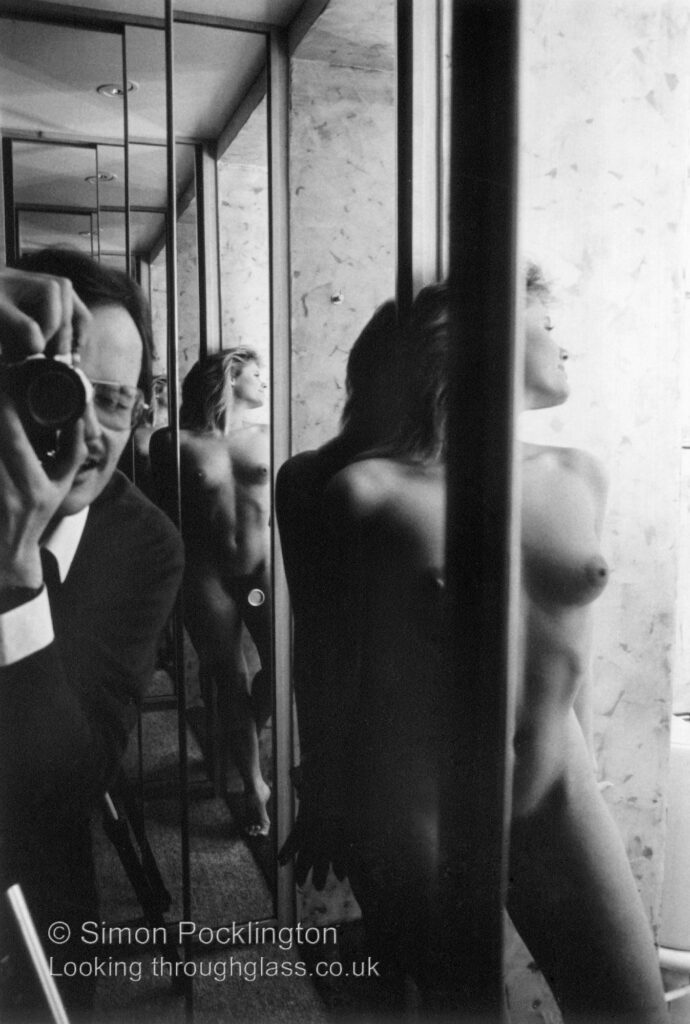


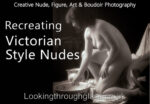
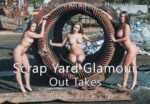






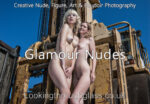

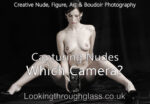
Great article! That is the type of info that
are meant to be shared around the net.
Hey There. I found your blog using msn. This is an extremely well written article.
I’ll make sure to bookmark it and return to read more of your useful info.
Thanks for the post. I’ll definitely comeback.